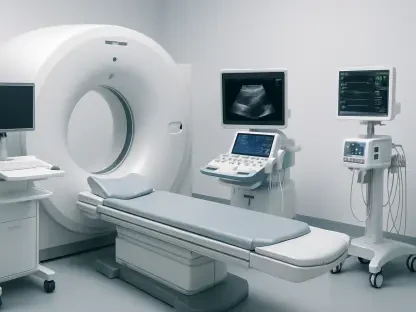In a significant leap forward in oncology, researchers at Helmholtz Munich have pioneered a technique offering fresh hope in tackling multiple myeloma, a common blood cancer. This new method, called MiROM, delivers innovative advancements over traditional approaches by employing a groundbreaking label-free imaging method. The unique capabilities of MiROM lie in its ability to conduct real-time analyses of single cells, providing insights into treatment efficacy with unparalleled precision. By moving away from conventional practices, which require extensive sampling and yield generalized tumor data, MiROM utilizes infrared light and fascinating chemistry to offer a detailed look at cellular processes.
Breakthrough in Treatment Evaluation
Understanding MiROM Technology
MiROM represents a convergence of cutting-edge science and clinical potential. Central to its functioning is the use of infrared light that induces specific molecular vibrations within proteins, resulting in the release of ultrasound waves. These waves are pivotal in capturing changes in protein structures, with particular attention given to intermolecular beta-sheets and apoptosis. The latter are crucial indicators of how effectively a treatment is working or if resistance is developing. This technology allows clinicians to tailor treatments to individual patients, fostering a more personalized and effective healthcare strategy for those battling myeloma.
This transformative capability separates MiROM from traditional methods, which often rely heavily on large tumor samples and yield aggregated data. Such data sometimes lack detail for nuanced analysis, while MiROM excels in identifying subtle changes linked to disease progression and treatment response. Initial studies have already demonstrated MiROM’s effectiveness in identifying protein structural changes in cultured myeloma cells exposed to doxorubicin, a chemotherapeutic agent. The ability to discern these changes underscores the potential scope of MiROM in enhancing the precision of ongoing patient care.
Implications for Broader Applications
The implications of MiROM extend beyond its current application in treating myeloma, opening avenues for addressing other conditions tied to protein misfolding. Disorders such as Alzheimer’s and Parkinson’s diseases, notorious for their complexity and treatment challenges, could benefit from the insights MiROM technology promises to deliver. By refining diagnosis and monitoring, it enables a more refined approach to these complex neurodegenerative diseases.
Moreover, lead researchers Dr. Francesca Gasparin and Dr. Vasilis Ntziachristos have underscored the future role of MiROM in reshaping drug screening, diagnostics, and patient monitoring. As their research progresses, integrating MiROM into widespread clinical use remains a priority. This endeavor is critical, as expanding its application could transform not just cancer treatment, but the broader landscape of personalized medicine by allowing for faster, data-driven therapeutic interventions.
Future Prospects and Clinical Integration
Advancing Towards Routine Use
As the research community and healthcare providers look to the future, the integration of MiROM into standard clinical practice stands as a pivotal goal. Ensuring broad access to such technology can revolutionize treatment protocols and enhance patient outcomes on a global scale. Dr. Gasparin and Dr. Ntziachristos are committed to validating MiROM’s efficacy across larger patient cohorts, which is vital in establishing its reliability and versatility in real-world medical applications.
This commitment aligns with the need for a multifaceted approach that not only includes refining the technology but also involves addressing barriers to implementation. Training healthcare professionals to efficiently utilize MiROM and equipping medical facilities with the necessary resources are critical factors in achieving seamless integration. By delivering real-time, personalized treatment insights, MiROM can significantly enhance the overall quality of healthcare while also potentially reducing treatment costs and improving efficiency.
Beyond MyelomA Vision for Wider Implementation
In a major advancement in the field of oncology, scientists at Helmholtz Munich have developed a cutting-edge technique that brings new hope in the fight against multiple myeloma, a prevalent form of blood cancer. This innovative method, known as MiROM, marks a significant departure from traditional strategies by using an advanced label-free imaging technique. The hallmark of MiROM is its remarkable ability to analyze single cells in real-time, providing an unmatched level of detail regarding treatment effectiveness. Traditional methods often involve extensive sampling and offer only generalized tumor data, but MiROM leverages infrared light and sophisticated chemistry to dive deep into cellular processes. This novel approach allows for a much clearer picture of the tumor’s behavior and changes in response to therapy, making it a powerful tool for precision medicine. By avoiding the pitfalls of conventional techniques, such as extensive biopsy requirements, MiROM represents a transformative leap in understanding and potentially treating this challenging disease.









